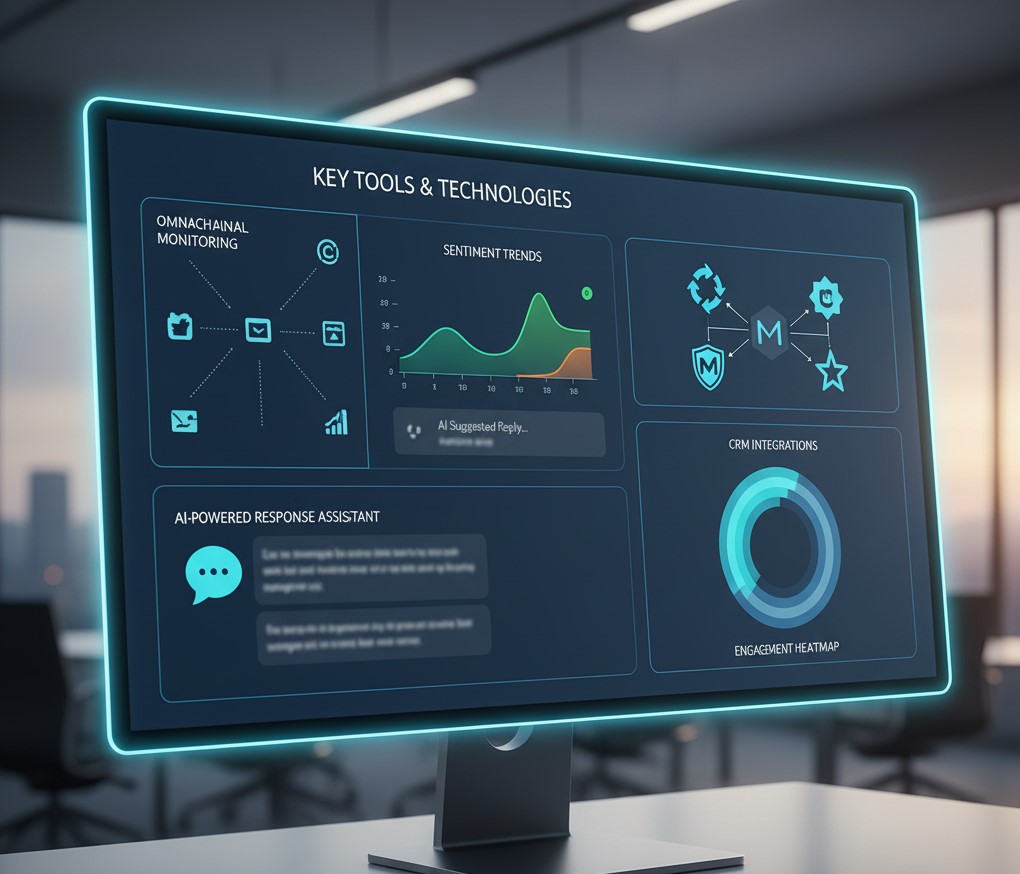In today’s digital landscape, brand sentiment can shift in an instant. A single negative comment or viral complaint can undermine years of goodwill overnight. To stay ahead, businesses are turning to artificial intelligence for online reputation management (ORM). AI-driven ORM platforms offer real-time monitoring, automated response capabilities, and predictive insights that empower brands to protect and enhance their digital image proactively. In this comprehensive guide, we explore how AI can revolutionize your reputation strategy, outline best practices, and show you how to measure success.
1. What Is AI-Driven Online Reputation Management?
AI-driven ORM harnesses machine learning, natural language processing (NLP), and predictive analytics to track brand mentions, customer reviews, social media posts, and news articles across the web. Instead of manual searches and spreadsheets, AI platforms continuously scan hundreds of sources, classify sentiment, and triage issues by severity. Key capabilities include:
- Sentiment Analysis: NLP models detect positive, negative, or neutral tones in text, images, and even voice reviews.
- Entity Recognition: AI identifies your brand, products, executives, and competitors within a stream of unstructured data.
- Real-Time Alerts: Instant notifications when high-impact mentions or review spikes occur.
- Automated Triage: Prioritization of issues based on sentiment severity, source influence, and historical context.
- Predictive Insights: Forecasting potential reputation crises by analyzing emerging trends and language patterns.
2. Benefits of Real-Time Monitoring

Traditional ORM often relies on periodic manual checks—leaving brands reactive rather than proactive. With AI-powered real-time monitoring, you gain:
- Immediate Awareness: Be the first to know when a dissatisfied customer posts a scathing review or when media coverage turns negative.
- Crisis Prevention: Early detection of patterns—like a sudden surge in negative sentiment—enables rapid intervention before issues go viral.
- Resource Efficiency: Automated workflows and AI-driven triage free your team from manual monitoring, letting them focus on crafting strategic responses.
- Data-Driven Strategy: Dashboard analytics reveal which channels drive most sentiment, informing where to concentrate your engagement efforts.
- Consistent Engagement: Automated response templates and AI-suggested replies ensure every customer comment receives timely acknowledgment.
3. Key Tools and Technologies

Several platforms now integrate AI modules for enhanced ORM. When evaluating solutions, look for these features:
- Omnichannel Coverage: Crawl social media, forums, review sites, news outlets, blogs, and podcasts seamlessly.
- Customizable Dashboards: Visualize metrics like sentiment trends, influencer reach, and keyword mentions in real time.
- API Integrations: Connect ORM data with your CRM, helpdesk, or social media management tools to create unified workflows.
- Automated Response Engines: Use AI to draft or send acknowledgments, apologies, or escalation notices based on predefined rules.
- Machine Learning Customization: Train the platform on your brand’s voice, industry jargon, and typical customer concerns for higher accuracy.
Top providers include platforms like Brandwatch, Synthesio, Meltwater, and emerging AI-native tools that offer modular AI add-ons. When selecting a vendor, request a demo to see real-time sentiment classification and response automation in action.
4. Implementing Automated Responses
Automated responses accelerate engagement, but require careful planning to avoid generic or inappropriate replies. Follow these steps:
- Define Response Scenarios: Map common ORM situations—positive praise, product complaints, service issues, misinformation, and crisis rumors.
- Craft Template Variations: For each scenario, write multiple response templates that match your brand voice and tone guidelines.
- Set Trigger Rules: Use sentiment score thresholds, source authority, and keyword flags to determine when automation kicks in versus when to alert a human agent.
- Human Oversight: Route high-risk or ambiguous cases to trained staff for personalized intervention. AI should assist, not replace, complex customer care.
- Continuous Tuning: Review automated response performance weekly—track engagement rates, follow-up sentiment shifts, and escalation volumes to refine templates and rules.
5. Best Practices for AI-Driven ORM
To maximize the impact of AI in your ORM strategy, adopt these best practices:
- Start Small and Scale: Pilot AI monitoring in a single channel (e.g., Twitter) before expanding to forums, review sites, and news media.
- Align Teams: Integrate marketing, customer service, PR, and legal teams into your ORM playbook. Clear roles and escalation paths prevent confusion during crises.
- Maintain Brand Voice Consistency: Train AI models on your style guide to avoid off-brand automated messages that confuse customers or invite ridicule.
- Monitor AI Accuracy: Periodically audit the platform’s sentiment classifications and entity recognitions. Retrain or adjust settings when accuracy drifts below acceptable thresholds.
- Combine Automation with Empathy: While AI can handle routine acknowledgments, complex or emotional issues require human empathy to preserve trust.
- Stay Compliant: Ensure your AI monitoring and data storage practices adhere to privacy regulations like GDPR and CCPA.
6. Measuring Success and Adjusting Strategies
An AI-driven ORM effort that lacks clear KPIs is like flying blind. Track these core metrics to evaluate performance:
- Sentiment Trend Index: Net positive versus negative mention ratio over time.
- Response Time: Average time to first acknowledgment or resolution post automated or human reply.
- Escalation Rate: Percentage of mentions bumped to human agents due to complexity or high sentiment risk.
- Engagement Impact: Change in customer satisfaction (CSAT) or Net Promoter Score (NPS) following AI interventions.
- Cost Efficiency: Comparison of manual monitoring hours saved versus investment in AI licensing and integration.
Use automated dashboards to visualize trends, set alerts when KPIs dip below thresholds, and conduct quarterly strategy reviews to refine your AI-powered workflows.
7. AI-Driven ORM in Action: A Brief Case Study
Consider a mid-sized hospitality chain that implemented AI-powered ORM across review sites and social media. Within six months, they saw:
- 40% reduction in negative review response time (from 12 hours to under 2 hours)
- 25% increase in positive sentiment as guests felt acknowledged and valued
- 30% decrease in crisis escalations after early intervention caught a service outage rumor
- 50% savings in manual monitoring labor costs, allowing staff to focus on high-touch guest care
By combining real-time alerts with crafted automated replies and human backup, the chain not only improved brand perception but also freed up resources for proactive reputation-building campaigns.
Conclusion
AI-driven online reputation management transforms how brands protect themselves in an always-on digital world. By leveraging real-time monitoring, sentiment analysis, and automated response engines, you can detect issues early, engage customers promptly, and measure outcomes with data-driven precision. Remember that successful AI integration balances automation with human empathy, continuous model tuning, and cross-team collaboration. Embrace these strategies to stay ahead of reputation threats, build trust, and turn every customer interaction into a positive brand experience.
Ready to elevate your ORM strategy? Start with a pilot in your highest-risk channel, train your AI on your unique voice, and watch how real-time intelligence and automation can safeguard and grow your brand online.
Learn more about: Your Online Reputation Is Your New Resume





